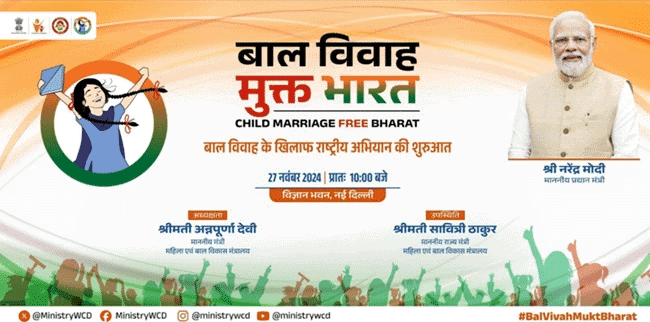Indian Society and Social Issues: December 2024 Current Affairs | General Test Preparation for CUET UG - CUET Commerce PDF Download
Inequality and the Role of Charitable Organizations

Why in News?
Warren Buffett, widely regarded as one of the greatest investors of all time, has donated over USD 52 billion to charitable causes. He emphasizes that wealth should be used to equalize opportunities rather than perpetuate inequality, a belief that aligns with the concept of luck egalitarianism. This has ignited discussions on the effectiveness and role of charitable organizations in addressing inequality.
Key Takeaways
- Warren Buffett's donations highlight the importance of equalizing opportunities through philanthropy.
- Luck egalitarianism argues that inequalities arising from unchosen circumstances should be corrected.
- Charitable organizations play a critical role in providing relief, advocating for policy changes, and redistributing wealth.
Additional Details
- Luck Egalitarianism: This philosophy posits that inequalities stemming from factors such as birthplace or socio-economic status are unjust and should be addressed. Buffett attributes his success not only to personal effort but also to structural advantages, acknowledging that his opportunities were due to being in the "right place at the right time."
- Research indicates that factors like birthplace and national economic conditions significantly affect individual wealth potential.
- Philanthropy as Moral Responsibility: Philanthropy exemplifies luck egalitarianism by redistributing wealth to create equal opportunities. Accumulating wealth across generations often perpetuates inequality, undermining meritocracy.
- Factors Contributing to Inequality: Various economic, technological, social, and environmental factors contribute to inequality. For instance, neoliberal policies since the 1980s have led to wealth concentration among a small elite, while technological advancements have displaced low-skilled workers.
- Role of Charitable Organizations: These organizations offer immediate relief through essential services, advocate for social awareness, and redistribute wealth to address inequality.
- Limitations of Charitable Organizations: While they provide temporary solutions, they often fail to address systemic issues. Dependency on voluntary donations can make their impact inconsistent, and they may inadvertently perpetuate the status quo.
Conclusion
While charitable organizations play an important role in alleviating immediate suffering and raising awareness, systemic changes through government policies are essential to effectively address the root causes of inequality. Recognizing that charity alone cannot substitute for comprehensive reform is crucial for achieving sustainable equality.
Bal Vivah Mukt Bharat Abhiyan

Why in News?
In an important move to stop child marriage and support young girls throughout the country, the Union Minister for Women and Child Development has started the national campaign “Bal Vivah Mukt Bharat”.
About
- Focused Approach: The campaign will target seven states with high child marriage rates: West Bengal, Bihar, Jharkhand, Rajasthan, Tripura, Assam, and Andhra Pradesh.
- Community Engagement: This initiative will include activities to raise awareness and engage communities to change their views and behaviors regarding child marriage. An action plan aims to lower child marriage rates to below 5% by 2029.
- Legal Empowerment: The campaign will enhance laws to prevent and penalize child marriage, including stricter enforcement of the Prohibition of Child Marriage Act.
- Digital Platform: A special online portal will be available for citizens to report instances of child marriage and find information on legal options.
Status of Child Marriage in India
Recent data shows that child marriages in India have dropped significantly, from 47.4% in 2005-06 to 23.3% in 2019-21.
- This decline is largely due to the enforcement of the Prevention of Child Marriage Act (PCMA) in 2006 and various awareness campaigns like Bal Vivah Mukt Bharat Abhiyan.
- According to the NFHS-5 data, child marriage rates decreased from 47.4% in 2005-06 to 26.8% in 2015-16.
- Despite the overall reduction, some states such as West Bengal, Bihar, and Tripura still have higher child marriage rates than the national average.
Key Reasons Behind Child Marriages in India
- Poverty and Economic Pressures: Families facing financial difficulties often see marriage as a way to ease their economic burden. Marrying off daughters early can mean one less person to support and sometimes provides immediate financial help through dowries.
- Cultural and Social Norms: In many cultures, early marriage is viewed as a normal practice and a way to maintain family honor. These long-standing beliefs make it hard to shift attitudes against child marriage.
- Gender Inequality and Patriarchy: Traditional values and gender inequality are major factors in child marriage. Girls are often seen as a burden, with their main roles expected to be as wives and mothers, limiting their chances for education and personal development.
- Lack of Education: Without access to education, girls are more likely to be married off early, as families may choose marriage over schooling. Girls who are educated are more likely to postpone marriage and have better futures.
- Fear of Sexual Assault: In some areas, the fear of sexual violence leads families to marry off their daughters young, believing it protects their honor. This approach often violates the rights and freedoms of the girls.
- Weak Law Enforcement: Even though laws against child marriage exist, enforcement is often lacking. Issues like corruption, lack of awareness, and insufficient resources for law enforcement contribute to the ongoing problem of child marriage. Strengthening law enforcement and ensuring accountability is crucial to address this issue.
- Pandemic-Induced Economic Hardship: The COVID-19 pandemic worsened economic challenges for many families, increasing the incidence of child marriages as some families turned to early marriage as a way to cope with financial stress.
|
164 videos|800 docs|1158 tests
|
FAQs on Indian Society and Social Issues: December 2024 Current Affairs - General Test Preparation for CUET UG - CUET Commerce
| 1. What is the Bal Vivah Mukt Bharat Abhiyan and its significance in addressing social issues? |  |
| 2. How do charitable organizations contribute to reducing inequality in society? |  |
| 3. What are some challenges faced by charitable organizations in their efforts to combat social issues? |  |
| 4. How can individuals contribute to the success of initiatives like Bal Vivah Mukt Bharat Abhiyan? |  |
| 5. What role does education play in reducing child marriage and inequality in society? |  |
















